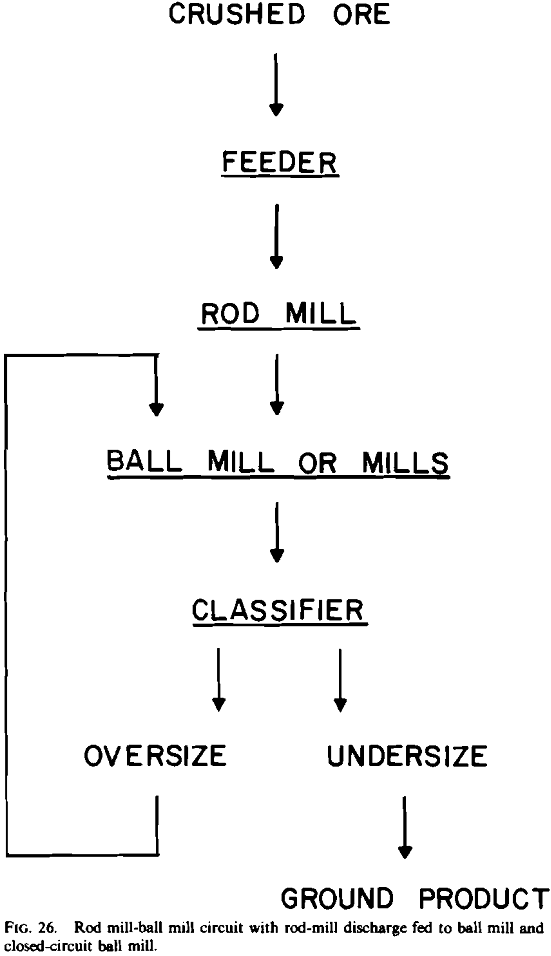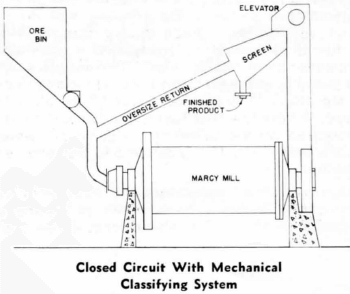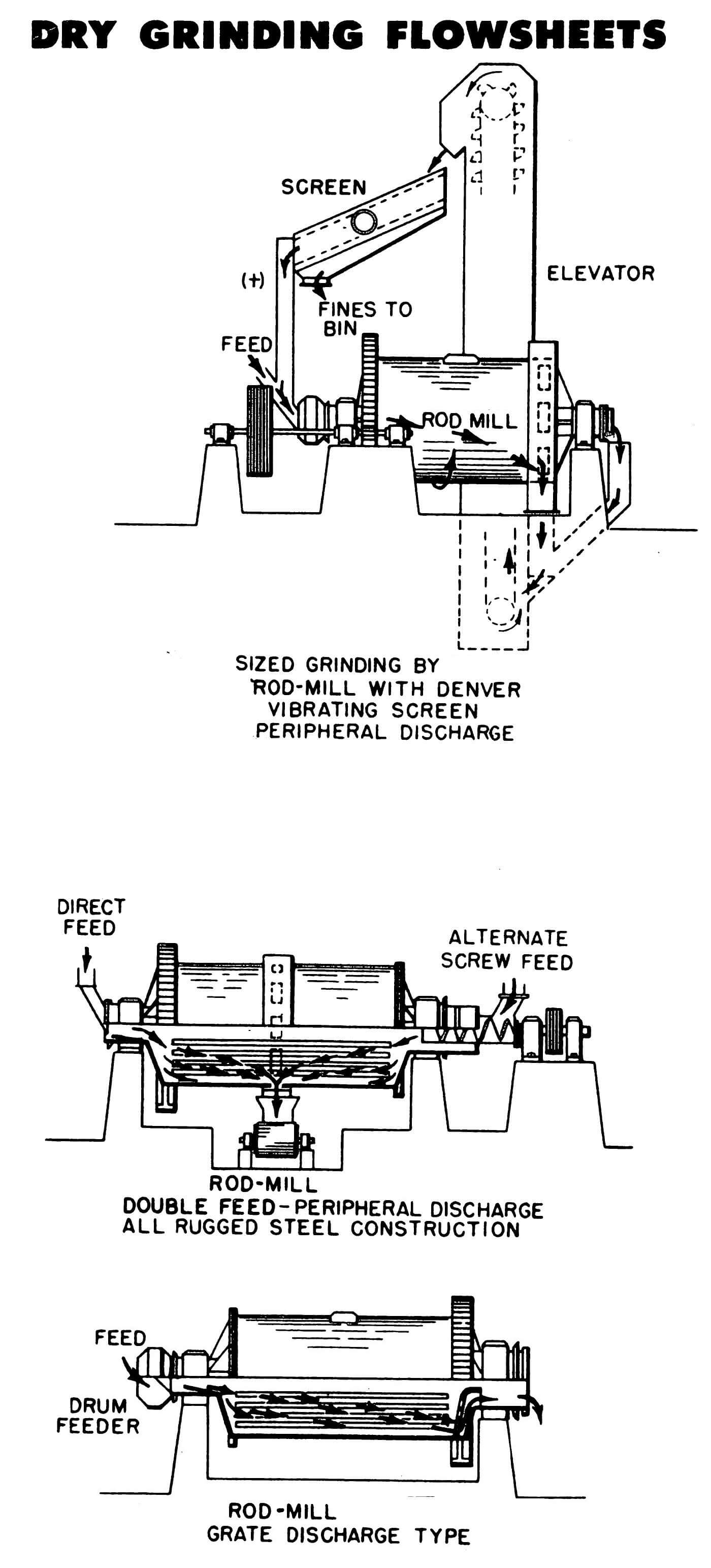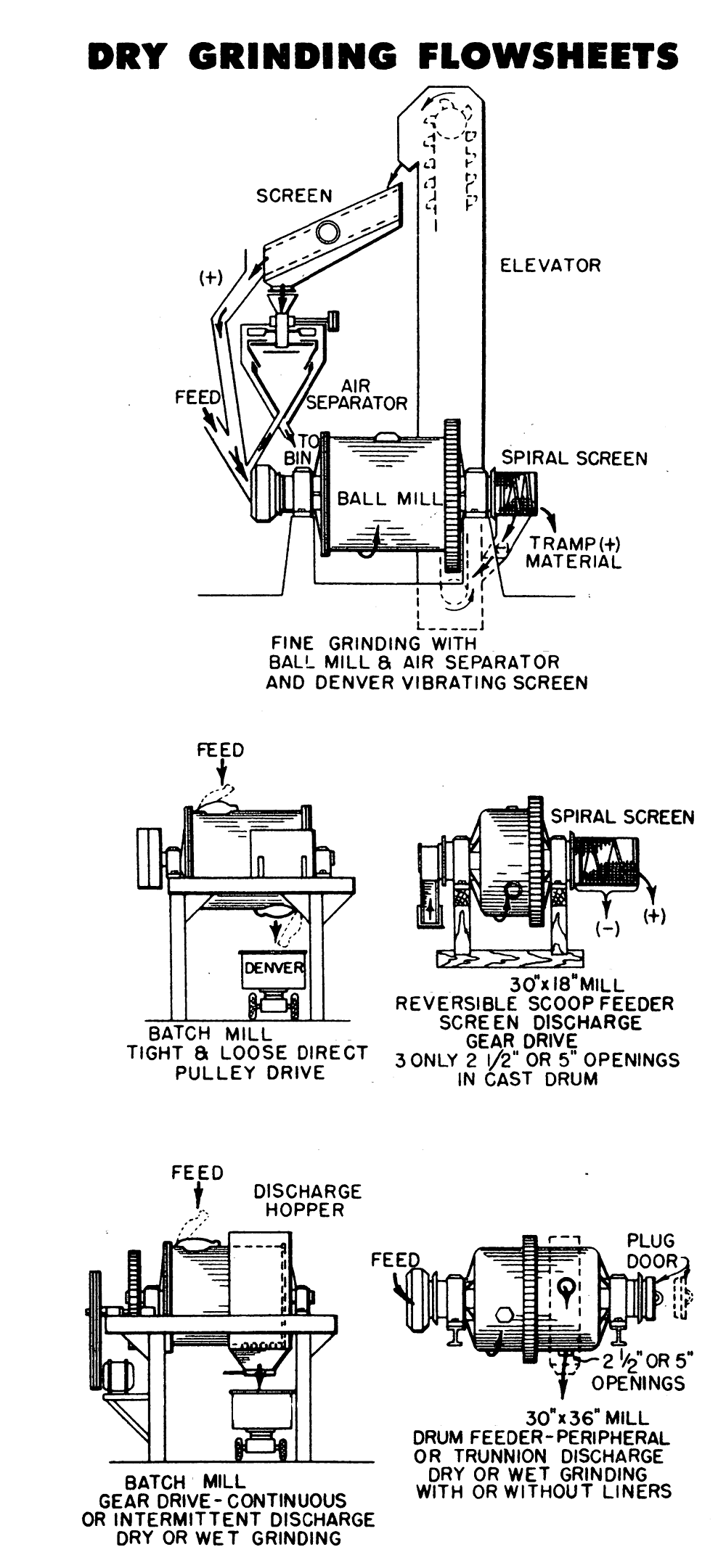A Open End, End Peripheral Discharge, CPD Rod Mills and Grate Discharge Ball Mills are particularly efficient for dry grinding. Such materials as limestone, cement clinker, gravel, phosphates, clays, gypsum, oil shale, terra cotta mixtures, coal and coke are economically reduced in size through their use.
Many such applications indicate the use of open circuit coarse grinding and in such cases the product will contain only a small amount of oversize material. Generally such operations are to the 4-20 mesh product size and work is done by the Rod Mill.
As product size becomes finer closed circuit grinding is indicated. Where the finish grind is to 35 mesh or coarser, screens can be used to advantage. A typical circuit of this type is shown below. As grinding becomes finer Ball Mills are required and closed circuit operation is generally recommended. Air separators do the sizing work as shown in a typical circuit.
In dry grinding work, principally fine grinding, size reduction is accomplished predominantly by attrition rather than impact. This is accomplished by operating such mills at lower peripheral speeds than under wet grinding applications. Power consumption for any given size mill then is lower although KWH/ton of material treated will be higher than wet grinding. This reaction is a result of a differently acting “bed of pulp” and lack of grinding media “coating”.
Due to a common “swelling action” of dry material being ground, the grinding media level is often reduced to approximately 40-42% of mill volume. Dry grinding offers less steel consumption than its equivalent wet grinding counterpart.
 |
 |
COKE GRINDING
With the advent of finer grinding of iron ores, improvements in beneficiation OF such ores, and changes in pyrometallurgical treatment of ores comes the requirement of reducing coke to finer sizes. We have in essence again pioneered in this application and developed the EPD Rod Mill to solve this problem.
Coke will contain a variable amount of moisture which critically affects the behavior in transporting and actual size reduction within the rod mill. Moisture content approximating 12% is most common. Below this the problems are simplified. Above 12%, moisture can nearly stop all grinding action—Our experience will guide your engineers in selecting the proper mill for your specific conditions.

